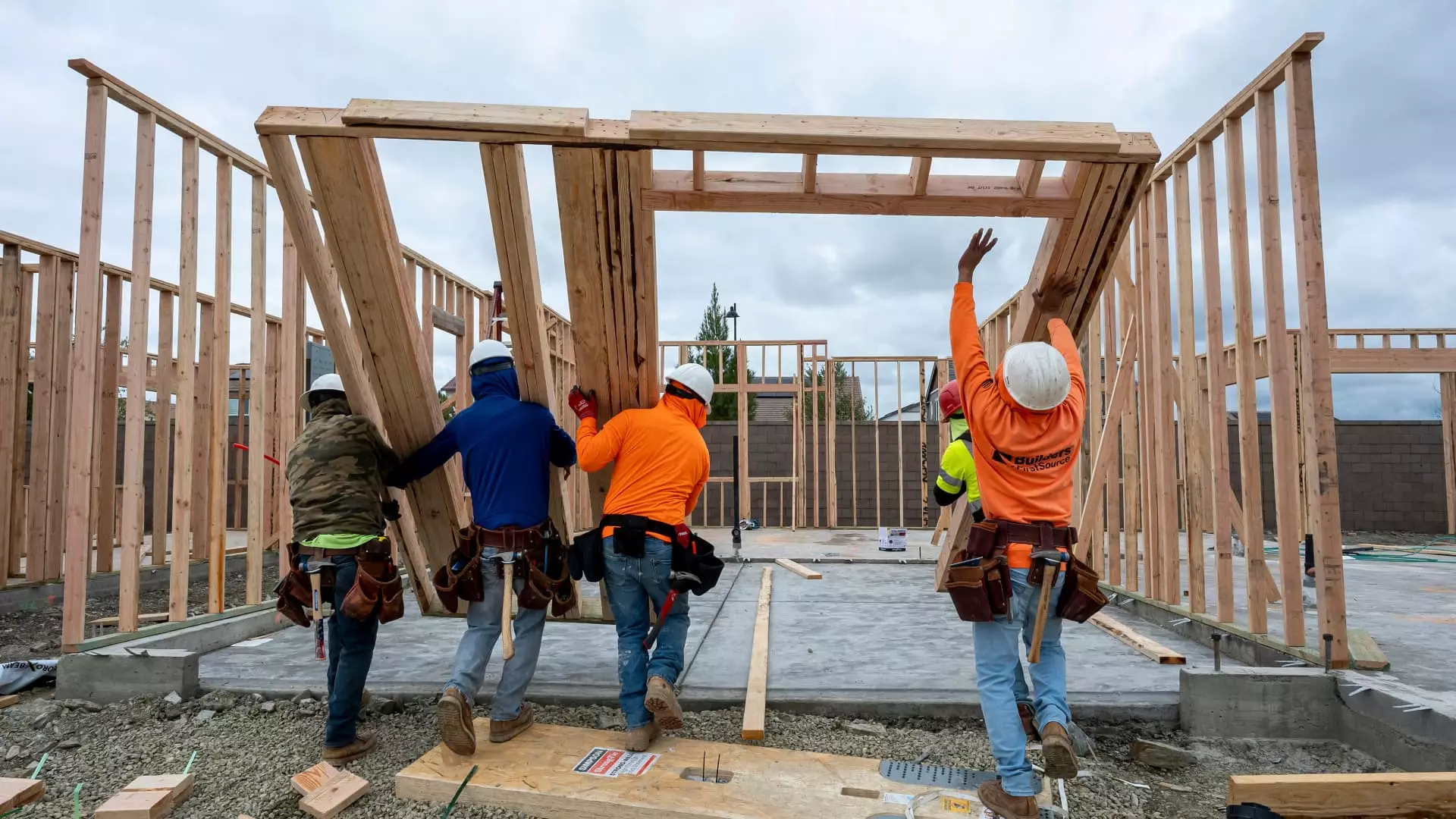In an alarming sign for American homebuilders, the latest data reveals that consumer confidence is crumbling under the weight of rising mortgage rates and economic uncertainty. Builder sentiment, as indicated by the National Association of Home Builders (NAHB)/Wells Fargo Housing Market Index (HMI), has dropped to a concerning low of 32. This figure not only signifies a decline from the previous month but also highlights the stark reality that anything below 50 is considered negative. A brief comparison to the same time last year reveals that the index stood at 43, suggesting that the current climate for homebuilding is less forgiving and more fraught with challenges than it has been in over a decade.
Despite optimistic forecasts hoping for a modest rebound, analysts were met with disheartening news. The past few years had been marked by unprecedented low mortgage rates, only to be recently exacerbated by rising costs associated with tariffs and general economic malaise—contributing to an air of indecision in the housing market. It is telling that this index has been lower than June’s current reading only twice since 2012, particularly during significant economic disruptions like the pandemic and the subsequent spikes in mortgage rates.
The Plight of Prospective Buyers
It is no secret that rising mortgage rates create a chilling effect on potential homebuyers. A staggering 37% of builders surveyed reported price cuts, the highest percentage since tracking began three years ago. While these price adjustments might seem like a much-needed relief for anxious buyers, they raise a critical question: Is this merely a temporary fix in a failing housing economy? The average price reduction has remained consistent at around 5%, an indicator that builders are feeling the pressure to entice consumers into a market that is becoming increasingly unfavorable.
Let’s break down the pressuring variables further: current sales conditions fell to 35, and sales expectations for the next six months dropped to 40, while buyer traffic decimated to a mere 21. These clues suggest a stagnant market less capable of meeting the demands of so-called “qualified” buyers, creating a cycle of despair wherein potential homeowners continue to retreat to the sidelines. This silent acknowledgment of defeat amongst consumers highlights a disturbing trend that homeownership is slipping further from reach—a reality that many families had hoped to escape from during the pandemic.
The Builder’s Dilemma: A Mixed Bag of Resilience and Vulnerability
In the face of rising inventory levels and economic apprehension, builders are finding themselves caught in a precarious dance for survival. Despite the grim headlines, some builders like those at Lennar are attempting to navigate these turbulent waters by incentivizing sales. The second quarter witnessed a nearly 9% decline in average home prices compared to the previous year’s quarter, signaling a strategic move to boost sales amidst a climate with dwindling buyer confidence. Co-CEO Stuart Miller’s comments illuminate the tension between keeping production volumes steady and ensuring that homes remain affordable—an uphill battle indeed.
Is this a sustainable approach? With economists like Robert Dietz projecting a decline in single-family starts, suspicions linger regarding how builders will manage the balance between supply and demand as buyer enthusiasm fades. Cutting prices may provide a temporary influx of business, but over time, such strategies could compromise long-term profitability, creating a rollercoaster of uncertainty for both builders and consumers.
A Broader Economic Reflection
The challenges facing the homebuilding sector extend beyond mere statistics; they are symptomatic of a larger economic ecosystem that is fragile, forcing many individuals and families into a conundrum. The reflective sentiment across the South and West—regions where most homes are constructed—indicates that the landscape is rife with struggles and diverging realities for builders and buyers.
Ultimately, what this data reveals is a troubling narrative about the state of the American dream. As homeownership aspirations diminish due to rising rates and economic unpredictability, it begs a deeper inquiry into the systemic issues that have led us to this juncture. The housing market, once considered a bedrock of American prosperity, now stands at a crossroads, confronting the painful potential that it may no longer represent a gateway to financial stability for millions. What lies ahead remains uncertain, but it is crystal clear that a transformation in approach is desperately needed to revive the American ideal of homeownership.

